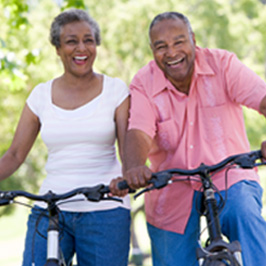-
By Barbara Knickerbocker BeskindJanuary 25, 2016
Editor’s note: This article is part of Next Avenue’s 2015 Influencers in Aging project honoring 50 people changing how we age and think about aging.
As an occupational therapist and someone in my early 90s, here’s what I recommend to age well: good posture and a brisk 30-minute walk daily from early childhood on. This builds bone density and balance reflexes that reduce the impact of falls and injuries in later years.
Walking has enormous benefits — emotionally and even creatively — as recent studies show. This is in addition to the well-known benefits to the pulmonary and cardiovascular systems. A sturdy gait pattern with alternating arm/leg movement helps maintain balance reflexes and strength in lateral hip muscles.
Good posture goes hand-in-hand with good walking, stride and vertical balance. It has been found that going out for a walk midday frees up the frontal lobes from the clutter of study or business. This can enhance creativity as well as reduce stress and/or depression.
Good for Children, Too
Currently, with the reduction of physical education programs in public schools and the exponential increase in handheld technology, there is serious risk that children will not get sufficient exercise. The posture in children and young adults is compromised by the forward tilt to the head over prolonged periods when they use electronic devices. Because of this, it is recommended to leave such devices behind during these daily walks.
Ski poles seem to provide better stability than a cane. They also imply healthy, active aging and that one is fully engaged in life.
Current Risks
Poor posture, compromised gait patterns and less daily walking lead me to think that people under 30 in particular, but also others tied to electronic devices throughout their lives, have a heightened risk of early aging. Carrying heavy backpacks or sports bags causes the hips to thrust back to maintain walking balance when the shoulders are hunched forward. By age 50, people may already be at risk of losing their balance.
Now consider the more common ills of aging, such as loss of joint range and flexibility, loss of strength in lower extremities, loss of balance due to a variety of causes and loss of vision. There’s an even greater need for maintaining good balance from the proprioceptors of the weight-bearing joints as well as the vestibular system of the ear.
For those already in the aging arena, my motto is “stay vertical and moving forward.” This is best done by keeping “ears over hips and hips over heels.”
Consider Poles Over Canes
For the past three years, as my vision has decreased, I have depended on regular use of a pair of ski poles. The vertical grip promotes good posture and enables me to use the natural gait patterns. Ski poles have assured me of the terrain and protected me from stumbling. I apply rocker bottoms (available at sporting goods stores) to provide valuable push-off at every step so it feels like I’m “floating” down the corridor.
Ski poles seem to provide better stability than a cane. They also imply healthy, active aging and that one is fully engaged in life.
Get the Kids in Gear
To promote daily walking for school-age children, I would advocate a low-budget competitive walking program in the public schools (grades 1 to 12) that could be measured weekly, monthly or annually with an inexpensive pedometer issued to students at the start of the school year. In low-income areas, I would urge local retailers to donate walking shoes.
To spread the walking program, a pedometer could also be checked out to the student to be used by a family member who is encouraged to walk daily with the student.
Seeing Results
Having been an occupational therapist for 44 years, 20 of which were in the U.S. Army, I have seen the benefits of good posture and balance in the physical rehabilitation of service injuries and in treating children with significant learning differences. Now that I’m visually impaired, I realize even more that my own balance skills must be maintained. I watch elderly people in my retirement community and see the damage to overall health from poor posture and leaning heavily on a walker.
In summary, the path to healthy aging begins early. Good posture and good walking habits can optimize bone density, muscle strength and body balance — and are essential to safe mobility in vision loss.

By Barbara Knickerbocker Beskind



Comments are closed.